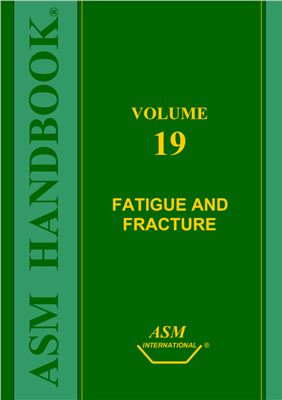ASM Inteational, 2002, 2592 p.
This volume of the ASM Handbook series, Fatigue and Fracture, marks the first separate Handbook on an important engineering topic of long-standing and continuing interest for both materials and mechanical engineers at many levels. Fatigue and fracture, like other forms of material degradation such as corrosion and wear, are common engineering conces that often limit the life of engineering materials.
This Handbook has been designed as a resource for basic concepts, alloy property data, and the testing and analysis methods used to characterize the fatigue and fracture behavior of structural materials. The overall intent is to provide coverage for three types of readers: i) metallurgists and materials engineers who need general guidelines on the practical implications of fatigue and fracture in the selection, analysis or application structural materials; ii) mechanical engineers who need information on the relative performance and the mechanistic basis of fatigue and fracture resistance in materials; and iii) experts seeking advanced coverage on the scientific and engineering models of fatigue and fracture.
This volume of the ASM Handbook series, Fatigue and Fracture, marks the first separate Handbook on an important engineering topic of long-standing and continuing interest for both materials and mechanical engineers at many levels. Fatigue and fracture, like other forms of material degradation such as corrosion and wear, are common engineering conces that often limit the life of engineering materials.
This Handbook has been designed as a resource for basic concepts, alloy property data, and the testing and analysis methods used to characterize the fatigue and fracture behavior of structural materials. The overall intent is to provide coverage for three types of readers: i) metallurgists and materials engineers who need general guidelines on the practical implications of fatigue and fracture in the selection, analysis or application structural materials; ii) mechanical engineers who need information on the relative performance and the mechanistic basis of fatigue and fracture resistance in materials; and iii) experts seeking advanced coverage on the scientific and engineering models of fatigue and fracture.

